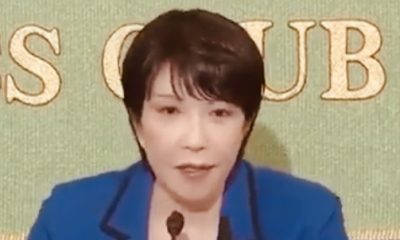First Female Prime Minister of Japan (Sanae Takaichi)
Kanako Mita, Sawako Utsumi, and Noriko Watanabe
Modern Tokyo Times

In a historic political upheaval, Sanae Takaichi has become Japan’s first-ever female Prime Minister — a breakthrough moment in a country where the highest echelons of power have long been closed to women. Her rise came after a fierce battle within the ruling Liberal Democratic Party (LDP), where she narrowly defeated Shinjiro Koizumi, the well-connected son of a former prime minister, in a dramatic runoff election.
But Takaichi’s victory celebration was short-lived. The LDP’s long-standing coalition partner, Komeito, abruptly exited the alliance, sending shockwaves through Japan’s political establishment and throwing her leadership into immediate jeopardy. Yet, in a stunning political maneuver, Takaichi forged a new alliance with the Japan Innovation Party (JIP), salvaging a governing majority (with other political support) and propelling her into the Prime Minister’s seat.
This unexpected pact with the JIP — a party sharply focused on alleviating the economic burden on ordinary citizens — could force the traditionally pro-business LDP into uncharted territory. The JIP has made it clear that tackling Japan’s crushing cost of living is non-negotiable, including addressing the reviled consumption tax on food and essentials — a silent agony for Japan’s struggling households.
Takaichi’s ascent, alongside Tokyo’s trailblazing female governor Yuriko Koike, marks a profound cultural shift. In a nation still deeply entangled in corporate and societal sexism, the presence of two powerful women at the helm of government challenges long-standing gender norms. Their leadership sends a signal — however conflicted — that the tides may finally be turning.
Yet Takaichi is no progressive firebrand. A staunch conservative, she defends traditional family values and embodies the complexities of Japan’s evolving gender politics. Her rise doesn’t signal a feminist revolution, but it does symbolize something long deemed impossible: that a woman, in modern Japan, can reach the pinnacle of power.
Takaichi faces rare politica headwinds within the LDP following two electoral setbacks in the past year. Whether she can win over the electorate remains uncertain. Her leadership is clouded by funding scandals and other serious controversies, all unfolding against the backdrop of a rising cost of living — while capitalists continue to reap significant profits from a booming Japanese stock market.
Takaichi said, “We must all pull together across all generations and work as one to rebuild the LDP. Everyone will have to work like a horse.”
Lee Jay Walker (Modern Tokyo Times analyst) says, “Takaichi, known as a foreign policy hawk, may adopt a more confrontational stance toward China and North Korea. However, the late Shinzo Abe — whom Takaichi deeply admired and who was assassinated in 2022 — maintained relatively cordial relations with Russian President Vladimir Putin. This raises the question of whether Takaichi will choose to soften Japan’s recent hardline rhetoric and actions toward Russia, or follow the more adversarial approach taken by Japan’s post-Abe leadership.”
As a protégé of Shinzo Abe (brutally assassinated), Takaichi is likely to continue along the path of Abenomics — relying on cheap borrowing to support expansive fiscal spending aimed at stimulating economic growth.
The BBC reports, the LDP “…has governed Japan for most of the past seven decades, but under (Shigeru) Ishiba it lost its majority in the lower house for the first time in 15 years. Then it lost its majority in the upper house in July, amid public anger after a fundraising scandal.”
Hence, the LDP’s weakened grip on power forces Takaichi to pivot sharply toward the kitchen-table issues that define the lives of everyday citizens. At the forefront: soaring living costs, an overstretched and outdated pension system, stagnant wages, and Japan’s demographic time bomb — a plunging birth rate that threatens the nation’s future. Complicating matters further is the politically charged question of immigration. As Japan quietly opens its doors wider to foreign labor out of economic necessity, public anxiety simmers in a society historically resistant to large-scale immigration. Takaichi must now walk a tightrope — reforming a system under strain, without alienating a public wary of rapid change.
Whether Takaichi will reshape Japan — or be shaped by the very system she now leads — remains to be seen. But one thing is certain: the old rules no longer apply.

Modern Tokyo News is part of the Modern Tokyo Times group
http://moderntokyotimes.com Modern Tokyo Times – International News and Japan News
http://sawakoart.com – Sawako Utsumi and Modern Tokyo Times artist
https://moderntokyonews.com Modern Tokyo News – Tokyo News and International News
PLEASE JOIN ON TWITTER
https://twitter.com/MTT_News Modern Tokyo Times
PLEASE JOIN ON FACEBOOK